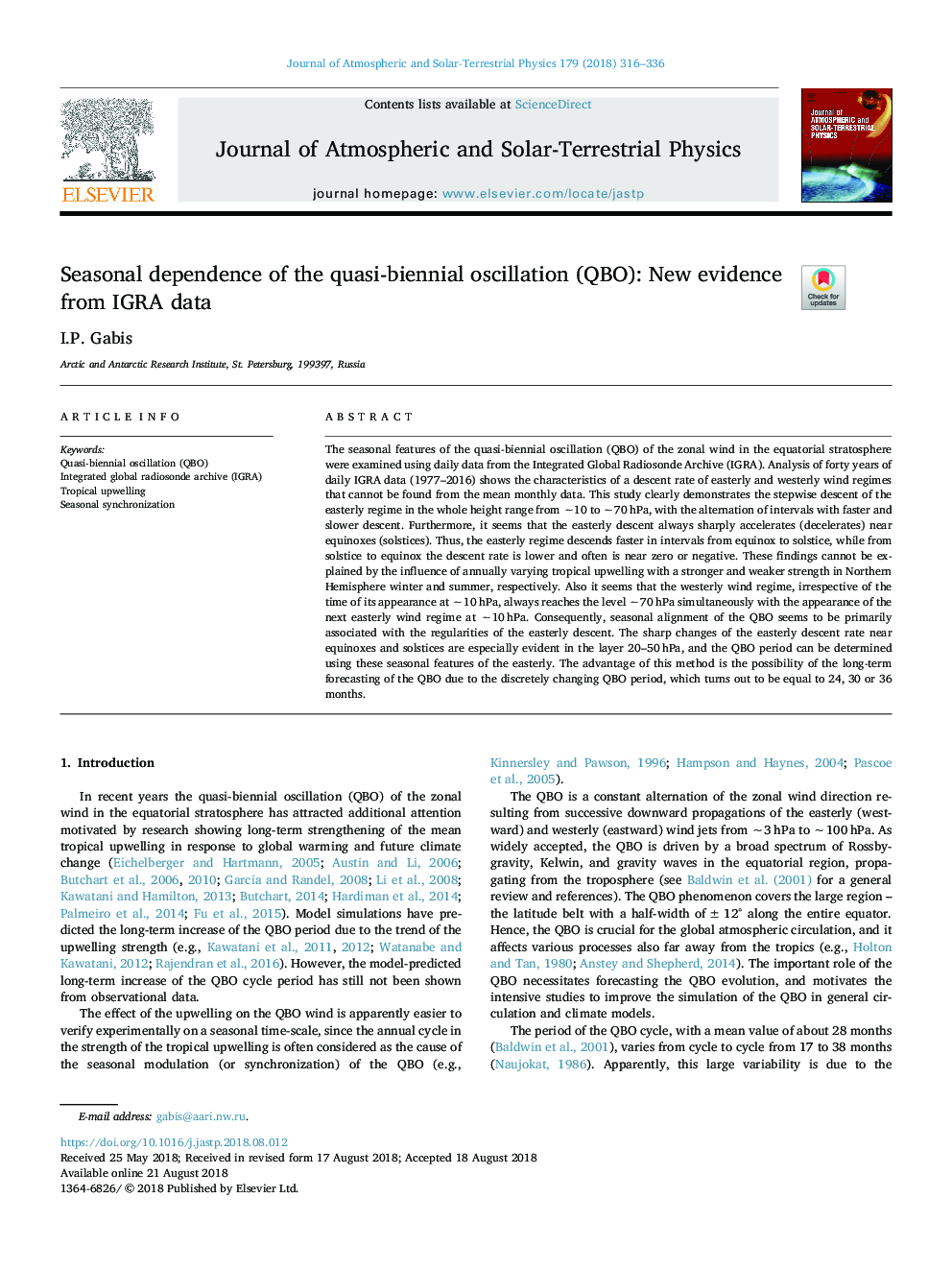| Article ID | Journal | Published Year | Pages | File Type |
|---|---|---|---|---|
| 9953775 | Journal of Atmospheric and Solar-Terrestrial Physics | 2018 | 21 Pages |
Abstract
The seasonal features of the quasi-biennial oscillation (QBO) of the zonal wind in the equatorial stratosphere were examined using daily data from the Integrated Global Radiosonde Archive (IGRA). Analysis of forty years of daily IGRA data (1977-2016) shows the characteristics of a descent rate of easterly and westerly wind regimes that cannot be found from the mean monthly data. This study clearly demonstrates the stepwise descent of the easterly regime in the whole height range from â¼10 to â¼70â¯hPa, with the alternation of intervals with faster and slower descent. Furthermore, it seems that the easterly descent always sharply accelerates (decelerates) near equinoxes (solstices). Thus, the easterly regime descends faster in intervals from equinox to solstice, while from solstice to equinox the descent rate is lower and often is near zero or negative. These findings cannot be explained by the influence of annually varying tropical upwelling with a stronger and weaker strength in Northern Hemisphere winter and summer, respectively. Also it seems that the westerly wind regime, irrespective of the time of its appearance at â¼10â¯hPa, always reaches the level â¼70â¯hPa simultaneously with the appearance of the next easterly wind regime at â¼10â¯hPa. Consequently, seasonal alignment of the QBO seems to be primarily associated with the regularities of the easterly descent. The sharp changes of the easterly descent rate near equinoxes and solstices are especially evident in the layer 20-50â¯hPa, and the QBO period can be determined using these seasonal features of the easterly. The advantage of this method is the possibility of the long-term forecasting of the QBO due to the discretely changing QBO period, which turns out to be equal to 24, 30 or 36 months.
Keywords
Related Topics
Physical Sciences and Engineering
Earth and Planetary Sciences
Geophysics
Authors
I.P. Gabis,
